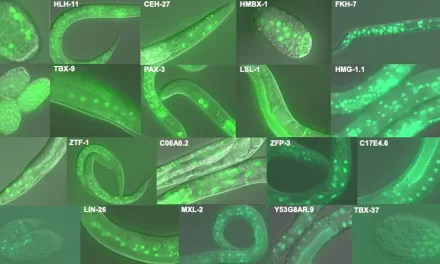In a groundbreaking study, researchers at Insilico Medicine have unveiled the potential of TNIK inhibition as an innovative approach to combat aging. Utilizing an AI-driven robotics laboratory, the team identified INS018_055 (Rentosertib) as a highly effective senomorphic agent capable of mitigating cellular senescence. Originally developed for idiopathic pulmonary fibrosis (IPF), Rentosertib has now emerged as a promising candidate in longevity research. The findings were published in Aging and Disease (IF=7.843).
AI-Powered Drug Discovery and Longevity Research
Generative AI has demonstrated extraordinary potential in revolutionizing healthcare and aging research. This study highlights AI’s ability to uncover dual-purpose therapeutic applications, addressing both disease-specific conditions like IPF and broader biological aging processes. The AI-driven robotics lab at Insilico Medicine played a critical role in preclinical validation, ensuring high efficiency, reproducibility, and unbiased analyses.
According to Dr. Qiuqiong Tang, biologist at Insilico Medicine and first author of the study, “Our robotics lab, combined with AI-driven workflows, allows us to validate preclinical experiments with unprecedented precision and efficiency.”
Mechanistic Insights into TNIK Inhibition
Previous studies have shown that TNIK (Traf2- and Nck-interacting kinase) plays a crucial role in cellular senescence by regulating key pathways linked to fibrosis and aging. The recent study employed a comprehensive approach, including in vitro senescence models, multi-omics data analysis, and mechanistic evaluations to assess Rentosertib’s efficacy as a senomorphic agent.
The study demonstrated that Rentosertib significantly reduces aging-related markers such as the senescence-associated secretory phenotype (SASP) and extracellular matrix remodeling. Furthermore, TNIK inhibition alleviates TGF-β and Wnt signaling—both strongly implicated in aging and fibrosis—while preserving the viability of healthy cells. This discovery opens avenues for further exploration of Rentosertib in aging-related degenerative conditions.
AI-Driven Efficiency in Drug Development
Notably, the study was conducted exclusively in Insilico’s state-of-the-art AI-driven robotics lab, integrating advanced AI workflows across multiple stages, including sample processing, high-throughput screening, imaging, next-generation sequencing, and AI-powered analysis. The AI-agent workflow minimizes manual handling biases while continuously refining models through dynamic feedback loops, improving target discovery and indication prediction accuracy.
Rentosertib is currently undergoing a Phase 2 clinical trial in the U.S. and has successfully completed a Phase 2a trial in China, demonstrating promising results in improving lung function in IPF patients. The molecule’s development was facilitated by Insilico’s proprietary AI platform, which identified TNIK as a novel therapeutic target. The AI-driven drug discovery approach was initially detailed in a 2024 Nature Biotechnology paper.
A New Era of AI-Driven Drug Discovery
Since its 2016 introduction of generative AI for novel molecule design, Insilico Medicine has continuously enhanced its Pharma.AI platform, a generative AI-powered solution spanning biology, chemistry, and medical research. Leveraging Pharma.AI, Insilico has nominated 22 developmental/preclinical candidates (DC/PCC) within a portfolio of over 30 assets since 2021, received IND clearance for 10 molecules, and completed multiple clinical trials, yielding positive results.
By integrating AI and automation, Insilico has significantly accelerated drug discovery timelines. Traditional drug development typically requires 2.5-4 years, but Insilico’s AI-driven approach has reduced the average time to DC to 12-18 months, synthesizing and testing 60-200 molecules per program. The success rate from DC to IND-enabling stages has reached 100%, marking a major milestone in AI-driven pharmaceutical innovation.
Conclusion
The identification of TNIK inhibition as a potential anti-aging strategy represents a significant advancement in longevity research. Rentosertib’s ability to mitigate cellular senescence while preserving healthy cells underscores the transformative potential of AI-powered drug discovery. As clinical trials progress, further studies may solidify its role in treating age-related degenerative diseases.
Disclaimer:
This article is for informational purposes only and does not constitute medical advice. The findings discussed are based on ongoing research, and Rentosertib has not yet been approved for widespread clinical use beyond its current trials. Consult a healthcare professional for medical guidance related to aging and associated conditions.
Source: Insilico Medicine
Journal Reference: Tang, Q., et al. (2025). AI-Driven Robotics Laboratory Identifies Pharmacological TNIK Inhibition as a Potent Senomorphic Agent. Aging and Disease. doi.org/10.14336/ad.2024.1492.












